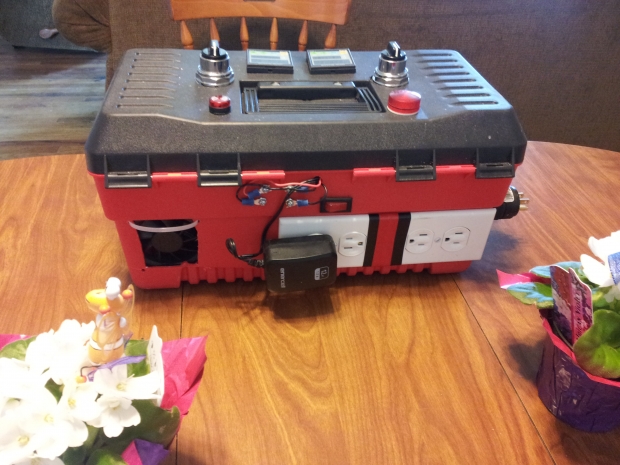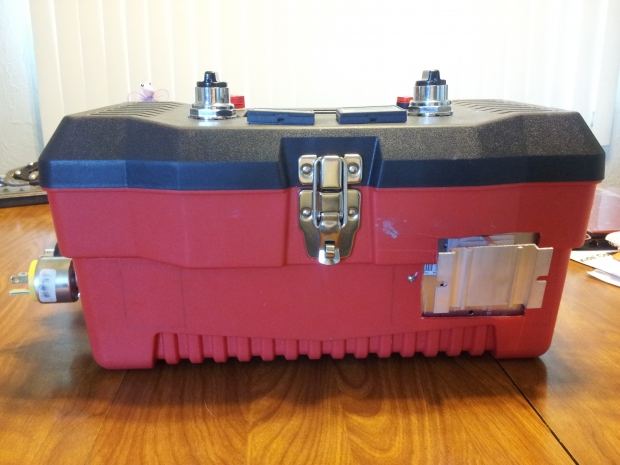For those who haven't kept up on the thread... in summation:
I was advised by an electrician to run 2 lines. I have a dedicated 110 line that runs the PIDs, the outlets and the alarms. I also have a dedicated 220 line that only runs the heating elements.
One of the outlets on the back is activated by a switch, the other outlet is controlled by the PID. This allows me to attach fans, additional pumps whatever and be able to switch them on or off at my discretion. (Yooper suggestion.)
You'll also note the particularly ugly thermo-couple wires coming out the back of the box. I needed to come up with a 'farmer Brown' method of handling quicker disconnect of the thermocouple wires so I simply added a post where the wires attached to the PIDs can connect easily with the wires of the thermocouple. Yes, I know... it's ugly.
You'll also note the 12v AC/DC converter plug back there. This runs my cooling fan and also serves as the dc power side of my 'ON' switch for the heating side. The 12v passed through the three way switch provide enough power to switch my SSR and turn the heating element on in manual mode.
The top of the box features two 3-way switches. This enables me to turn either the pump side or heating side to "ON", "AUTO" or "OFF".
I am only running one heating element plug out of the box (room constraints, although had I planned ahead I probably could have figured out how to cram two outlets in there.) The PID is used in auto mode to run the HLT and manual mode when I switch over to the BK. The HLT uses a 3500w element while the BK uses a 5500w element.
I was hopeful that I could get away without a heatsink for the heating side PID. This was a completely unfounded hope. I had to cut a hole in the front of the box, attach a stainless steel plate with a slit cut in it for the heatsink and attach the SSR with thermal compound. Having done so, the system works very well.
Tested the BK side last night. Started with 50 degree water (wanted to really put the element and the SSR through it's paces to make sure everything was good.) Got the water to boiling in about 30 minutes, cranked the PID down to 72% to maintain a light rolling boil.
So there you go. It was a journey and a half. I admit it probably won't win any artistic awards, but I have already used the control panel to handle the HLT and MLT processes. (I used propane for the BK on that brew day.) Everything went fairly smoothly considering new equipment and starting to figure out new processes. I am excited about my automated EHerms and will give updates on the quality of my brews henceforth.
Thanks to everyone for their advice, suggestions and help. I stole things from Kal and JP even though they didn't know I was stealing. (Ninja... that's me). Other people helped me troubleshoot and figure things out with all the components. I started this project completely ignorant. (No really... completely) and now I already know all the things I would do differently. ; )
For those of you considering putting together an EHerms system. It aint cheap, but man it's challenging and fun.. and when you fire it up and the darn thing works... well, that's just the icing on the cake, isn't it.







